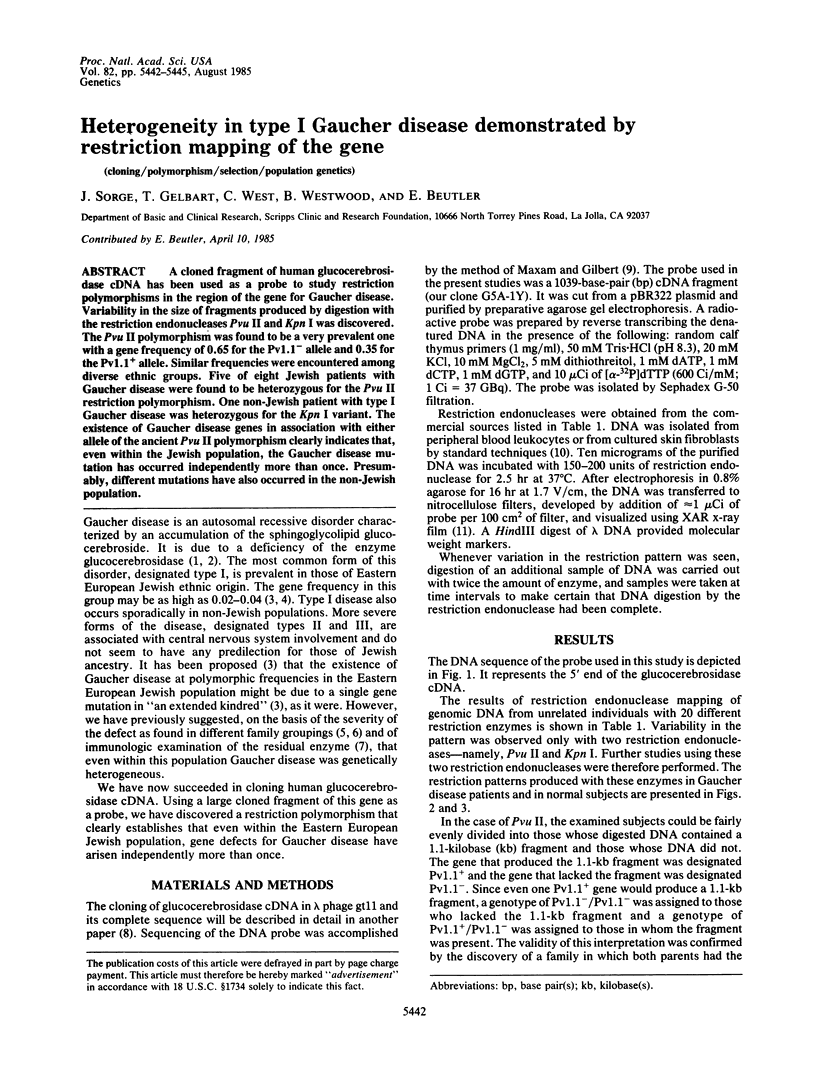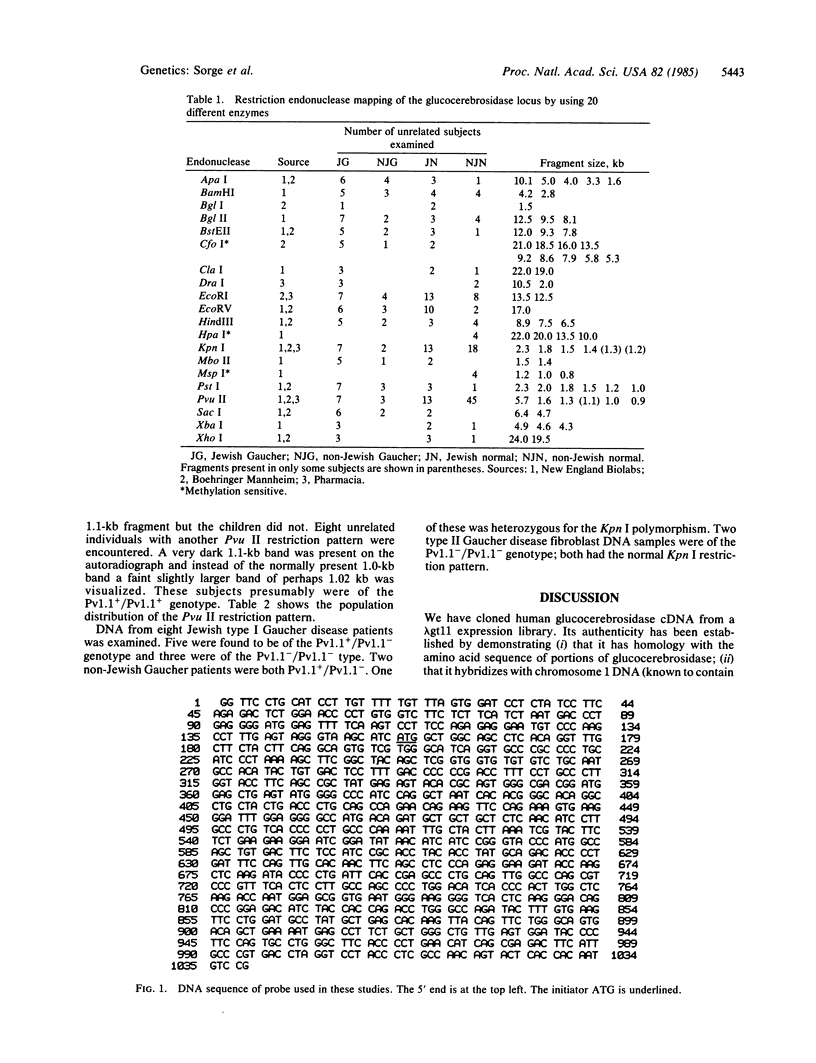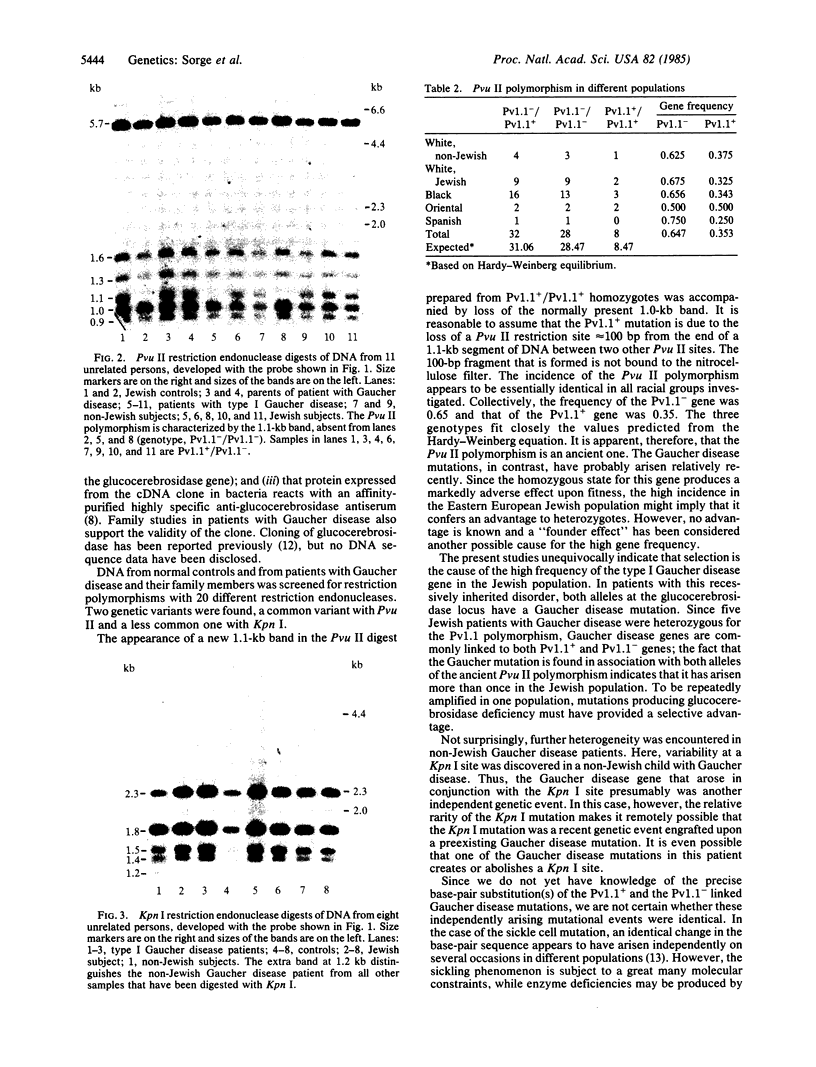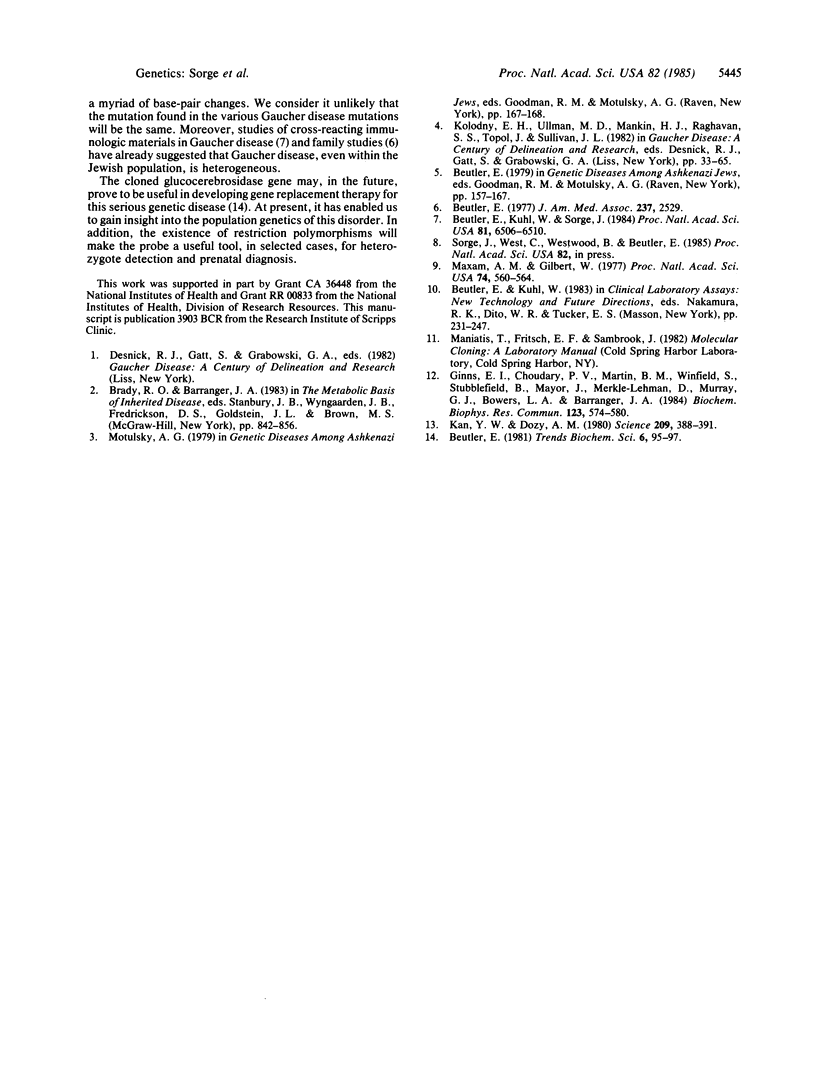Abstract
A cloned fragment of human glucocerebrosidase cDNA has been used as a probe to study restriction polymorphisms in the region of the gene for Gaucher disease. Variability in the size of fragments produced by digestion with the restriction endonucleases Pvu II and Kpn I was discovered. The Pvu II polymorphism was found to be a very prevalent one with a gene frequency of 0.65 for the Pv1.1- allele and 0.35 for the Pv1.1+ allele. Similar frequencies were encountered among diverse ethnic groups. Five of eight Jewish patients with Gaucher disease were found to be heterozygous for the Pvu II restriction polymorphism. One non-Jewish patient with type I Gaucher disease was heterozygous for the Kpn I variant. The existence of Gaucher disease genes in association with either allele of the ancient Pvu II polymorphism clearly indicates that, even within the Jewish population, the Gaucher disease mutation has occurred independently more than once. Presumably, different mutations have also occurred in the non-Jewish population.
Full text
PDF



Images in this article
Selected References
These references are in PubMed. This may not be the complete list of references from this article.
- Beutler E. Gaucher's disease in an asymptomatic 72-year-old. JAMA. 1977 Jun 6;237(23):2529–2529. [PubMed] [Google Scholar]
- Beutler E., Kuhl W., Sorge J. Cross-reacting material in Gaucher disease fibroblasts. Proc Natl Acad Sci U S A. 1984 Oct;81(20):6506–6510. doi: 10.1073/pnas.81.20.6506. [DOI] [PMC free article] [PubMed] [Google Scholar]
- Ginns E. I., Choudary P. V., Martin B. M., Winfield S., Stubblefield B., Mayor J., Merkle-Lehman D., Murray G. J., Bowers L. A., Barranger J. A. Isolation of cDNA clones for human beta-glucocerebrosidase using the lambda gt11 expression system. Biochem Biophys Res Commun. 1984 Sep 17;123(2):574–580. doi: 10.1016/0006-291x(84)90268-7. [DOI] [PubMed] [Google Scholar]
- Kan Y. W., Dozy A. M. Evolution of the hemoglobin S and C genes in world populations. Science. 1980 Jul 18;209(4454):388–391. doi: 10.1126/science.7384810. [DOI] [PubMed] [Google Scholar]
- Kolodny E. H., Ullman M. D., Mankin H. J., Raghavan S. S., Topol J., Sullivan J. L. Phenotypic manifestations of Gaucher disease: clinical features in 48 biochemically verified type 1 patients and comment on type 2 patients. Prog Clin Biol Res. 1982;95:33–65. [PubMed] [Google Scholar]
- Maxam A. M., Gilbert W. A new method for sequencing DNA. Proc Natl Acad Sci U S A. 1977 Feb;74(2):560–564. doi: 10.1073/pnas.74.2.560. [DOI] [PMC free article] [PubMed] [Google Scholar]




